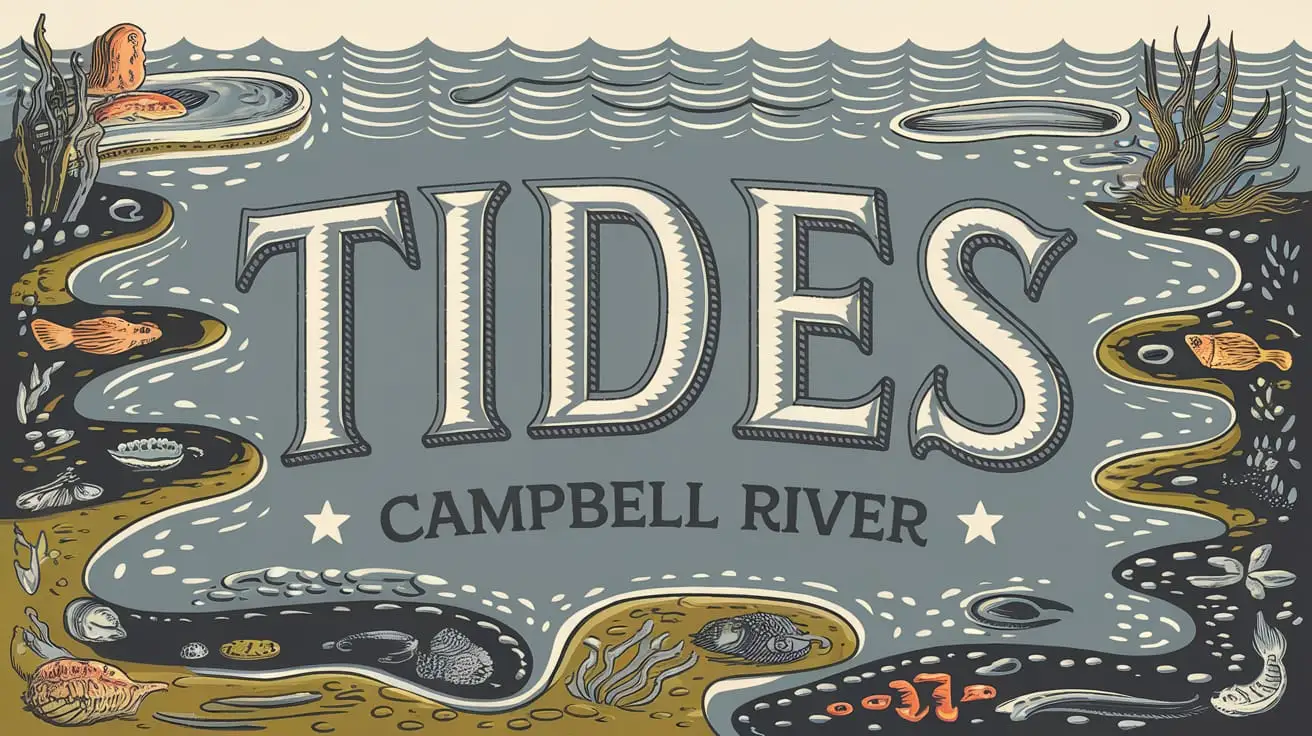Bookmark this page for current tides, future tide tables, plus tips on how to optimize your fishing in Campbell River using tides.

Current tides in Campbell River:
How to Read Tide Charts
If you want to fish like a pro, understanding how to use tide tables to find the best tide for your chosen spot is essential. Here’s a simple guide to help you get started.
Things to Know About Tides
To get the most out of your fishing trip, it’s helpful to learn these key concepts:
Tide: A tide is the movement of water levels influenced by the gravitational forces of the Moon, the Sun, and the Earth. These movements affect how and when fish move, making it important to plan your fishing trip around them.
As a rule of thumb, moving water improves your chances of getting a bite. Moving water stirs up the fishery, making fish more active.
Key Points to Consider
Before heading out on your fishing trip, consider these main points:
High Tide: The highest point of the water level.
Low Tide: The lowest point of the water level.
Rising Tide: When the water level is going up.
Falling Tide: When the water level is going down.
The difference between low tide and high tide is called the ‘tide range’.
How Tides Affect Fishing
The general rule for fishing based on tides is:
Moving Water: Rising and falling tides bring baitfish to the bigger fish you’re targeting, increasing your chances of a good catch.
Optimal Fishing Times
Rising Tide: Fish an hour or so before the high tide.
Falling Tide: Fish an hour or so after the high tide.
This means that during these periods, the water is moving, which stirs up food and attracts fish.
Conclusion & Resources
By understanding these basics and using tide tables, you can better plan your fishing trips in Campbell River. Happy fishing!
Also see: Fishing Calendar for Campbell River